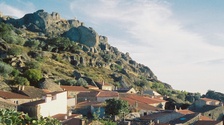搜索 英语 老师
Matthew
Can someone please check the accuracy of this poem (sijo) by Yun Seondo
I need to know that this is exactly how the poem (sijo) is written. It is part of "Winter" from The Fisherman's Calendar. Thank you.
간 밤에 눈 갠 뒤에 경치가 달라졌구나!
<배 저어라, 배 저어라.>
앞 체는 유리처럼 잔잔한 넓은 바다, 뒤에는 겹겹이 둘러싸인 백옥 같은 산이로다. <찌그덩 찌그덩 어야차!>
아, 여기는 신선이 사는 선경인가? 부처가 사는 정토인가? 인간 속세는 아니로다.
2017年12月19日 21:37
回答 · 2
1
That is a modified version into modern Korean language.
That poem is originally written in old Korean alphabet mixed with Hanja.
Here is a modern Korean spelling version.
간밤의 눈 갠 후(後)에 경물(景物)이 달랐고야
이어라 이어라,
앞에는 만경유리(萬頃琉璃) 뒤에는 천첩옥산(千疊玉山)
지국총 지국총 어사와,
션계(仙界)ㄴ가 불계(佛界)ㄴ가 인간(人間)이 아니로다
Here is a modern Korean transliteration version.
간밤의 눈갠 후(後)에 경물(景物)이 달랃고야
이어라 이어라
압희는 만경유리(萬頃琉璃) 뒤희는 천텹옥산(天疊玉山)
지국총 지국총 어사와
션계(仙界)ㄴ가 불계(佛界)ㄴ가 인간(人間)이 아니로다
And, here is the full poem with original spelling and some comments.
http://www.seelotus.com/gojeon/gojeon/si-jo/eo-bu-sa-si-sa-dong.htm
2017年12月20日
还未找到你的答案吗?
把你的问题写下来,让母语人士来帮助你!
Matthew
语言技能
英语, 法语, 爱尔兰盖尔语, 日语, 西班牙语
学习语言
法语, 爱尔兰盖尔语, 日语, 西班牙语
你或许会喜欢的文章

The Power of Storytelling in Business Communication
43 赞 · 9 评论

Back-to-School English: 15 Must-Know Phrases for the Classroom
31 赞 · 6 评论

Ten Tourist towns in Portugal that nobody remembers
59 赞 · 23 评论
更多文章
